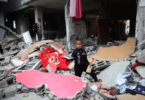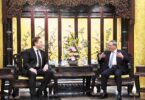Currently the share of inexpensive hydel power is 30 percent in the overall energy mix, which is likely to drop to 26 percent within the next 10 to 15 years, if policy of electricity generation from a clean renewable source such as hydel is not implemented on fast track. Unfortunately, electricity generation from renewable sources including hydel, wind and solar did not figure in power policies of1994 and 2013. Thermal power generation from diesel, furnace oil and coal with highest in the region tariff brought havoc to the national economy.
Present government has given emphasis to hydel power generation. Few projects of small and medium hydel powers stations are under completion in Khyber Pukhtunkhwa and construction work of 740 megawatt hydropower project of Mohamand dam on the River Swat has been started. Likewise, construction contract of Dasu hydel power project phase-1 of 2160 megawatt has been awarded. Next in line is Diyamer Basha hydropower project. Both these projects are to be implemented in Gilgit Baltistan on the River Indus upstream Tarbella, adding more than 8000 megawatt very low cost electricity to the national grid.
Mohamand dam project shall be completed within the next six years. However, other two hydropower project may take 15 years for completion. In the short term, the most feasible option is construction of small hydel power stations on the potential sites of rivers in Khyber Pukhtunkhwa, from which 2000 megawatt electricity can be generated within the next few years. Government has planned that addition in hydel power will be done mostly with public sector investment, which has invited a critique from some experts. But greater role of public sector investment in power sector is justified when tested on the touchstone of power purchase agreements with IPPs.






